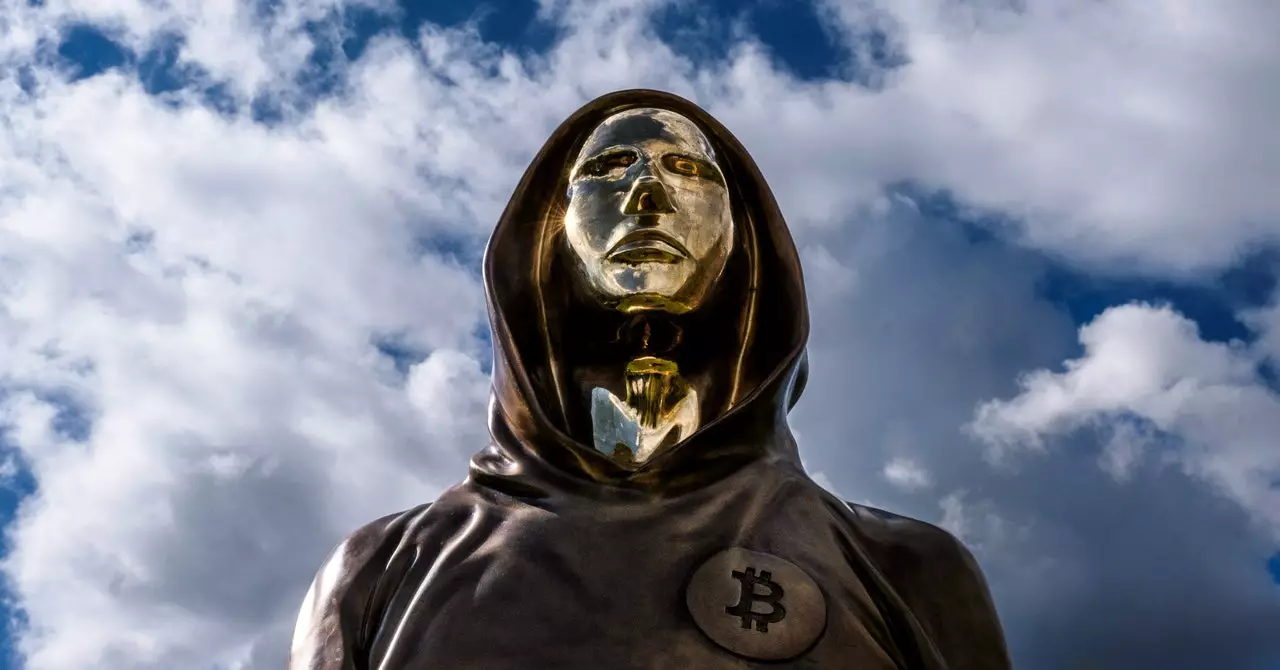For over a decade, the identity of Satoshi Nakamoto, the unseen architect behind Bitcoin, has remained a tantalizing mystery that has captivated the tech community, journalists, and avid investors alike. The allure of discovering Satoshi’s true identity draws parallels with historical enigmas like that of William Shakespeare or the authors of secretive political treatises. Recently, the premiere of an HBO documentary titled *Money Electric: The Bitcoin Mystery* has re-ignited interest in this elusive figure, presenting a fresh angle on an age-old inquiry. Filmmaker Cullen Hoback’s confrontational approach to Peter Todd, a notable figure in the Bitcoin community, encapsulates the myriad theories surrounding Satoshi’s identity. As Todd chuckles dismissively at accusations of being the infamous creator, he epitomizes how the search for Satoshi has transitioned from serious investigation to a realm of speculative absurdity.
The mystery surrounding Satoshi Nakamoto can often resemble a modern-day witch hunt, with various characters emerging and claiming ownership over an identity that has assumed a mythic quality. Theories abound, with names like Hal Finney, Adam Back, and Nick Szabo frequently risen to the forefront, either by merit of their cryptographic credentials or proximity to Bitcoin’s formative days. Todd himself notes the commonality of these shared suspicions—everyone has at some point been considered a potential Satoshi. The convergence of conspiracy theories coupled with the inherent lack of definitive evidence cultivates an environment ripe for speculation, where misinformation often thrives. Todd’s engagement with Hoback in the documentary hints at the broader psychological transformation of individuals who participate in these discussions—turning skepticism into entertainment, and factual inquiry into folklore.
Lessons from Past Pursuits
The pursuit of Satoshi Nakamoto has been marked by several high-profile attempts to unmask him. A notable instance occurred in December 2015, when WIRED and Gizmodo separately pointed the finger at Craig Wright, an Australian computer scientist. The unveiling, grounded in supposedly leaked documents, initially sparked excitement among enthusiasts but quickly devolved into confusion and skepticism as contradictions emerged. With a subsequent UK High Court ruling affirming that Wright is not Satoshi, the debacle demonstrated that attempts to identify a singular creator can often be fraught with complexities and legal entanglements. Observing such attempts presents a cautionary tale, reflecting how the media’s role in amplifying unverified claims can further muddy the waters.
Collective Identity and Its Implications
The notion that “everyone is Satoshi, and nobody is Satoshi” reflects a deeper philosophical intricacy within the Bitcoin community, suggesting that the collective ownership of Bitcoin transcends its anonymous creator. This paradigm nurtures a culture of egalitarianism, where contributions to the Bitcoin network from mining to coding possess equal weight. The allure of a singular creator is tempered by the understanding that Bitcoin thrives on a decentralized framework, stripping away hierarchical power structures that traditional financial systems are built upon. Purists argue that maintaining Satoshi’s anonymity preserves the integrity of Bitcoin as a decentralized fragile ecosystem, free from the influence of a singular figure whose biases could distort its underlying principles.
As *Money Electric* continues its provocative exploration of Bitcoin’s origins, it underscores the parallel narrative that encapsulates not just the quest for Satoshi but the very essence of cryptocurrency itself. The identity of the creator may remain shrouded in mystery, but the ethos surrounding Bitcoin—innovation, transformation, and freedom—resonates profoundly within its community. The future of Bitcoin, liberated from the myths surrounding its fountainhead, is likely to evolve based on community consensus rather than the whims of a singular visionary. While the quest for truth may remain unrealized, the inspiration it invokes lies within the realm of collaborative potential, beckoning a world where collective innovation outweighs individual authorship. In a way, perhaps the greatest legacy of Satoshi Nakamoto is not one of identity, but rather the spark of a movement that democratizes financial transactions and redefines ownership in a digital age.

